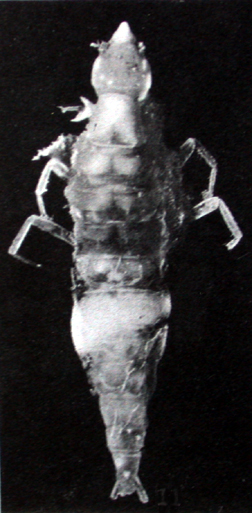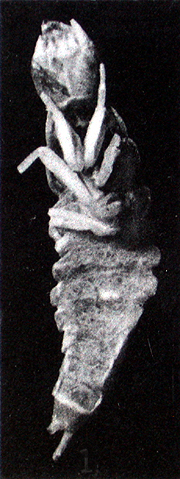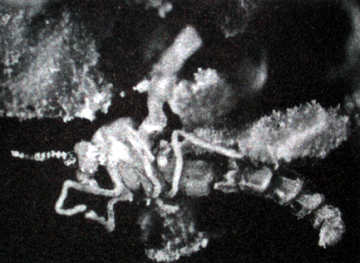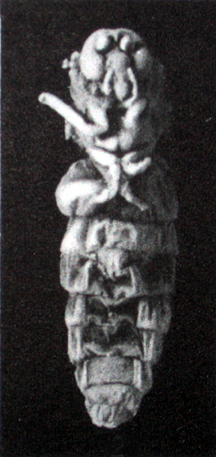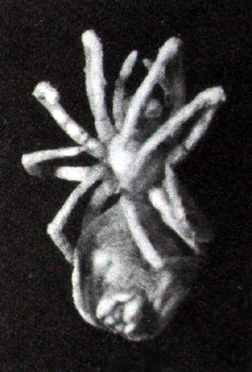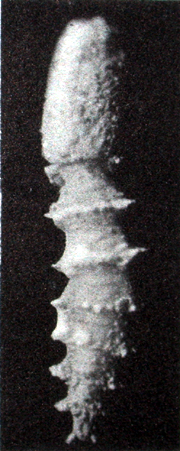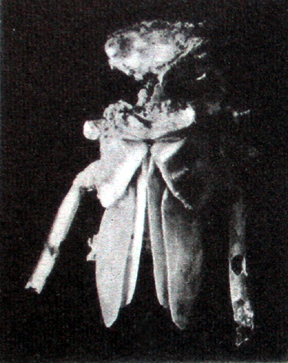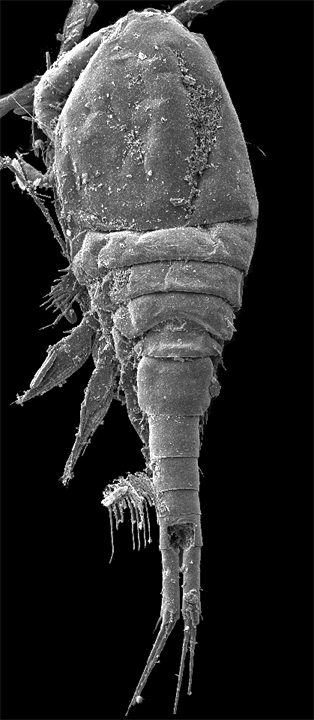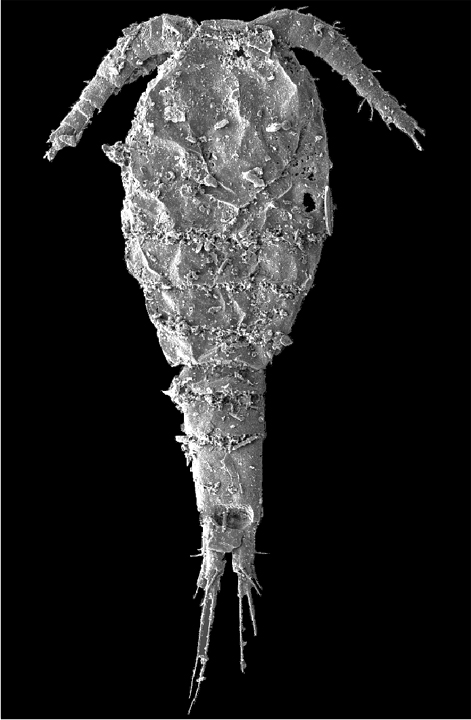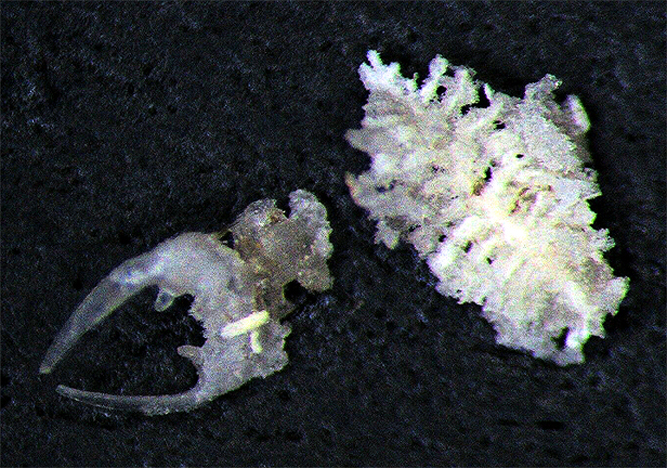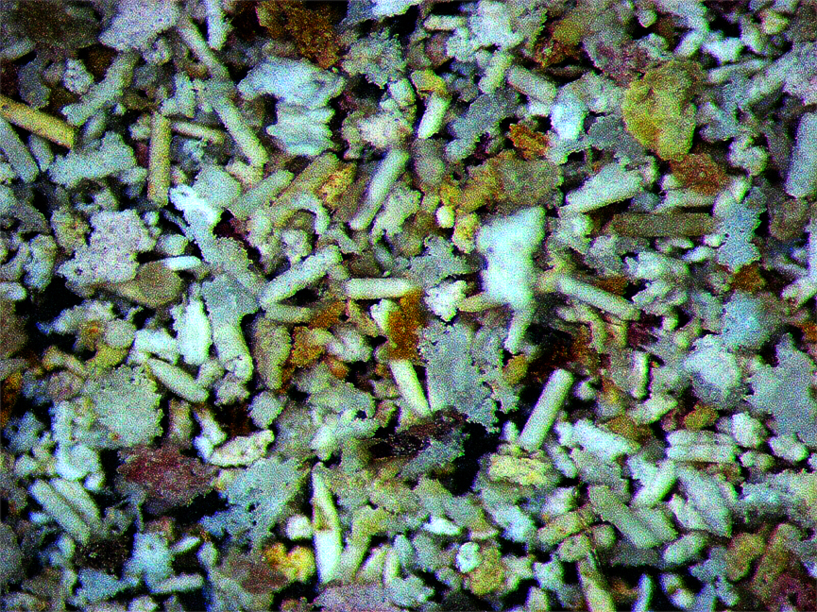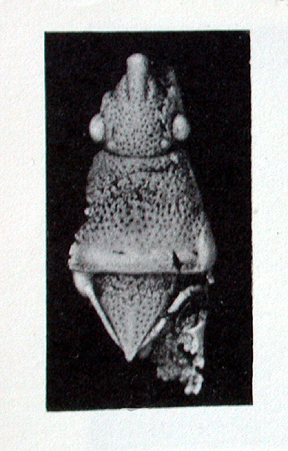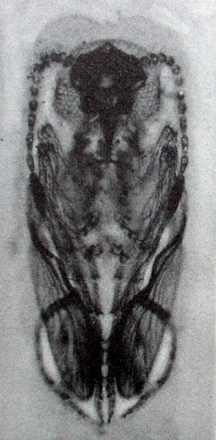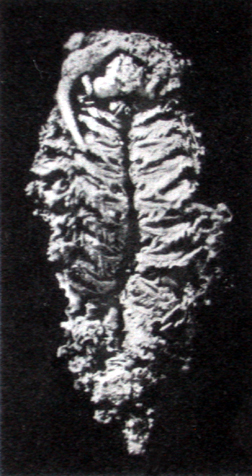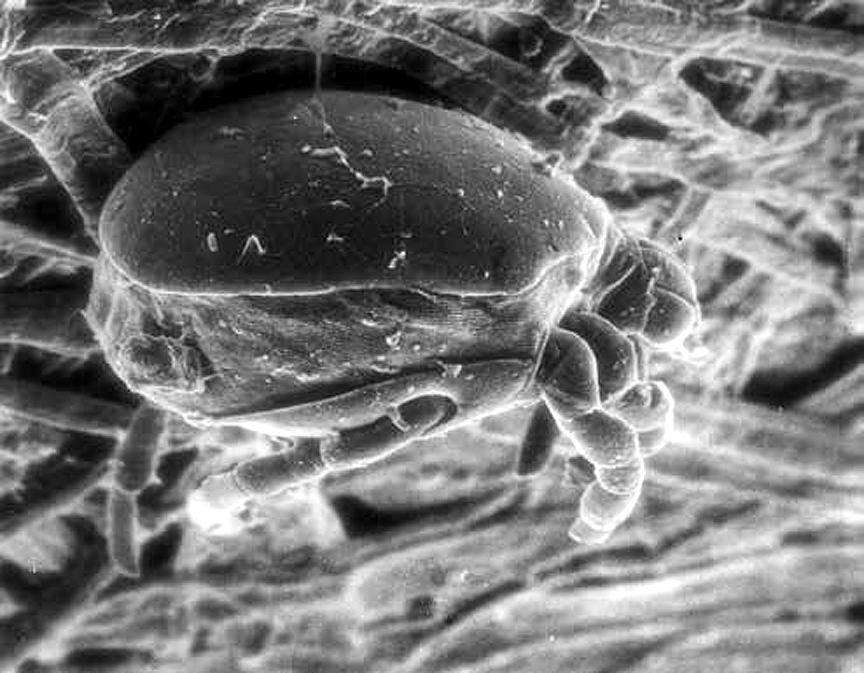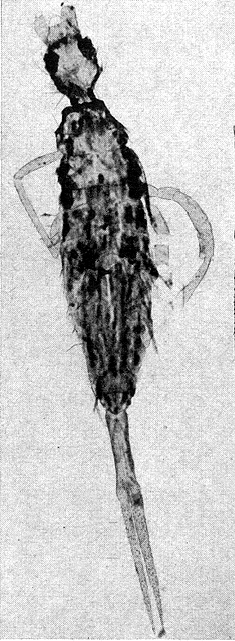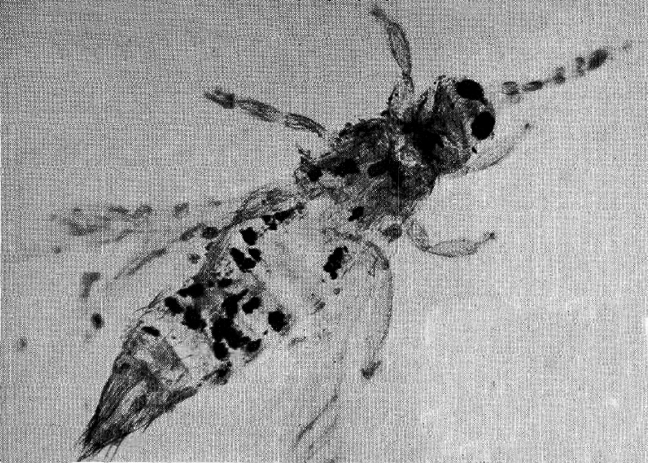|
Top--These particular specimens might not look like much,
but they're really significant finds; at right is but one of
only a mere handful of fossil fairy shrimp specimens recovered
worlwide that reveal a significant portion of the actual body.
At left is a silicified antenna from a fairy shrimp; that any
portion of a fairy shrimp is preserved here is incredibly remarkable,
because fairy shrimp have no true hard parts, to begin with.
The scientific name is Archaebranchinecta barstowensis
and the body preservation is almost 3 millimeters long (slightly
less than an eighth of an inch).
Interestingly, this specific species of fossil fairy shrimp
from the middle Miocene Barstow Formation is most similar to
the living Archaebranchinecta pollicifera, now native
to the mountains of Bolivia and Peru, around Lake Titicaca.
Bottom--Those minute rod-like pellets, scattered among
the silicified residues ramaining from calcareous concretions
dissilved in a bath of diluted acid, belong to fairy shrimp coprolites
(petrified poop). In actual size, each of the arthropodal poop
pellets is less than a millimeter long (roughly one twenty-fourth
of an inch).
An educational aside here is that the hard nature of the
original fecal materal proves that the fairy shrimp that expelled
them originally fed on cyanobacterial blue-green algal blooms.
If the fairy shrimp (AKA, the crapping crustaceans) had chowed
down on some other variety of algae--say, green algae for example--the
feces that they produced would have been squishy, soft, not at
all amenable to preservation in the rocks.
Both photographs courtesy an anonymous individual at a
specific web site.
|
